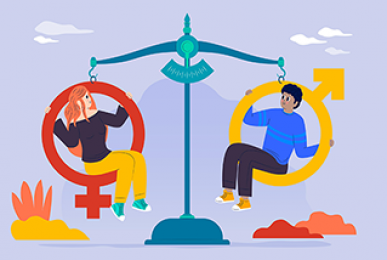
Women in the STEM Education in Azerbaijan
Category Azerbaijan EducationA. EXECUTIVE SUMMARY
In the swiftly changing landscape of today’s global economy, the importance of Science, Technology, Engineering, and Mathematics (STEM) education is becoming increasingly evident. Recent studies indicate that education in science, technology, engineering, and mathematics (STEM fields is a more effective gauge of human capital. This is because STEM education promotes innovation and develops a workforce that can propel and adapt to technological progress, a key factor in economic growth and development. STEM education catalyzes sustainable economic growth by enhancing competitiveness and preparing the workforce for the digital era. It lays the foundation for innovation, offering nations opportunities to explore new economic pathways and address contemporary challenges effectively. Empirical evidence supports this, as Croak (2018) found that, on average, a 1% increase in the number of first university STEM degrees per worker is associated with an approximate 2% increase in annual GDP per labor force, all else being equal.
For Azerbaijan, the STEM sector is particularly indispensable. This focus on STEM education is mirrored globally, with most of the top 20 countries, according to the proportion of STEM tertiary graduates, being in the developing world. This trend indicates that policy-makers in emerging economies, including Azerbaijan, are promoting technical subjects to drive innovation and economic development. By prioritizing STEM education, Azerbaijan can harness the potential of its workforce, foster innovation, and secure sustainable economic growth.
Moreover, ensuring gender equality in the STEM sector is principal. Women remain underrepresented in STEM fields globally, despite their significant potential contributions. Promoting gender parity in STEM not only strengthens diversity and inclusivity but also harnesses a broader talent pool essential for tackling complex global issues. By empowering all individuals with equal access to STEM education and opportunities, societies can maximize innovation, economic prosperity, and societal progress in the 21st century.
In Azerbaijan, women make up 52% of the population aged 15 and older but face significant challenges in the labor market and leadership roles. Historically, 674 occupations across various sectors, including transport, energy, and agriculture, were reserved for men until 2022. Until then, women were prohibited from working as train engineers, driving city buses, and more. Additionally, women are legally prohibited from being hired into a wide array of jobs that involve underground work, potentially hazardous conditions, or hard physical labor. Despite women now constituting nearly half of the employed population, they suffer higher unemployment rates and dominate the economically inactive demographic, often classified as housewives. Women earn 70-80% of men's salaries on average, with significant gender pay gaps and underrepresentation in higher-paying fields. Leadership positions are predominantly held by men, reinforcing gender inequality. Women tend to work in lower-wage sectors like healthcare and education, while men dominate higher-paying fields like transportation and construction, resulting in one of the highest gender pay gaps in Europe and Central Asia at 35.2%. In Azerbaijan, Azerbaijanian women are significantly underrepresented in STEM fields and earn substantially less than men. Despite women making up 40% of STEM graduates in the country, which is higher than the global average of women researchers, they face barriers like glass ceilings and stereotypes that hinder their careers. Efforts by UNDP and USAID aim to inspire more women and girls to pursue STEM careers, crucial for achieving Sustainable Development Goals and promoting gender equality through innovation.






